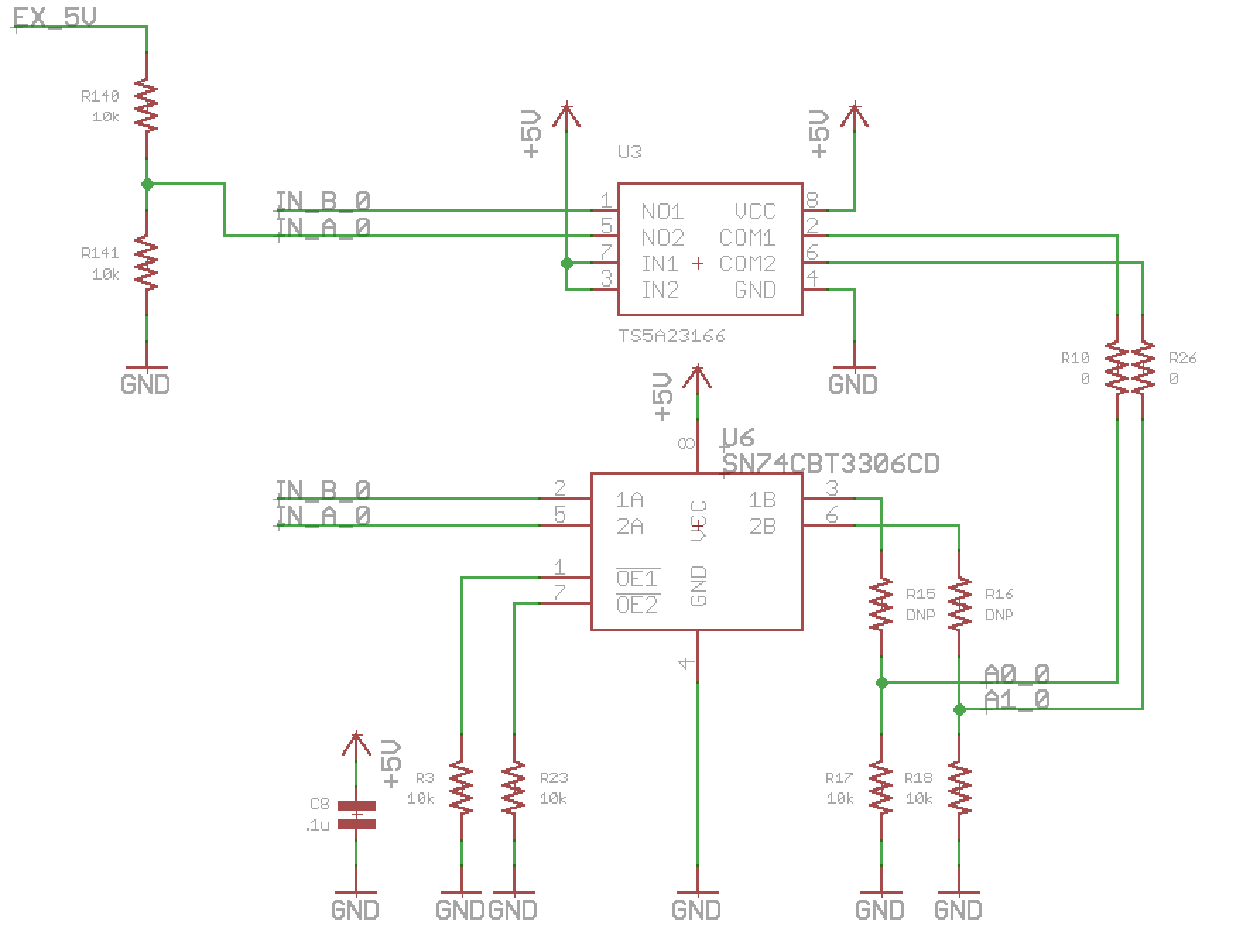Other Parts Discussed in Thread: SN74CBT3306
Switch Gurus:
I designed in this device at the recommendation of Dakotah:
https://e2e.ti.com/support/switches_multiplexers/f/388/t/618079
However my client is seeing signals at the NO terminals sink current when the device is unpowered. I was told this device had IOFF protection. Is this not the case?
Best,
Trey


